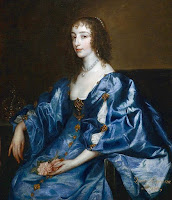 |
| Charles I, by Sir Anthony van Dyck (1633) Public domain |
What was the Personal Rule?
The Personal Rule is the name given to the period between the dissolution of Charles's third parliament in March 1629 and his calling of what became known as the Short Parliament in November 1640. His eleven-year rule without parliament was legal, but not necessarily wise politically, as without parliament it was difficult for the monarch to assess the feeling in the country at large.Charles could survive without having to call parliament as long as the country was not at war. This meant that his foreign policy changed abruptly. In April 1629 he made peace with France, leaving the Huguenots in the lurch. In June 1629 Peter Paul Rubens arrived in London as the envoy of Philip IV to arrange the exchange of ambassadors. In November 1630 Charles made with Spain (and Rubens was rewarded with a knighthood).
Thus, while Europe was engaged in the Thirty Years' War, England stayed out of the conflict, even though Charles's sister was involved. He sent her money, but no army. However, English, Scottish, and Irish volunteers went to fight - mainly for the Protestant cause against Spain and the Holy Roman Empire.
 |
| Peter Paul Rubens 'Peace and War' a powerful anti-war painting, a gift to Charles I. National Gallery, Creative Commons. |







